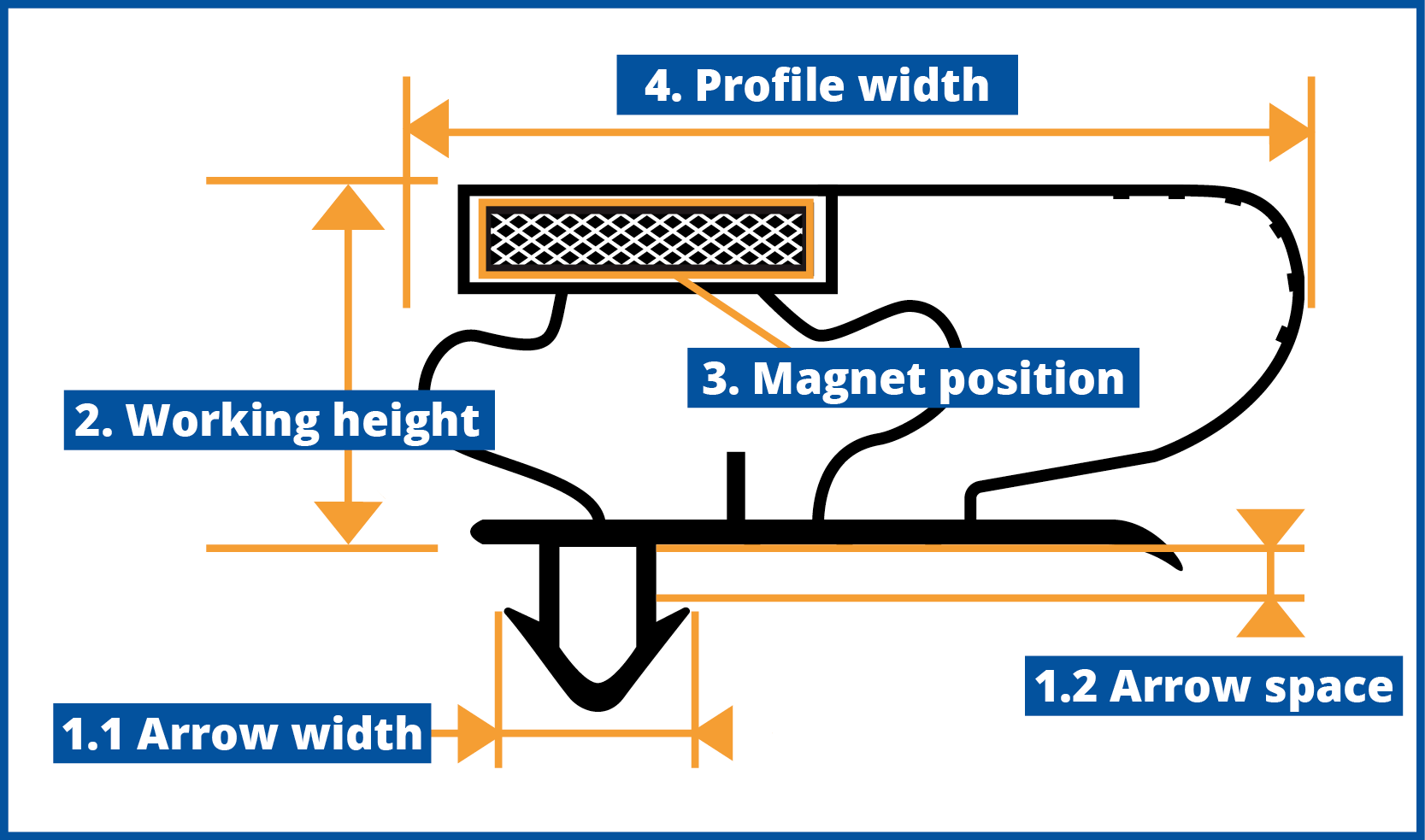Stappenplan voor alternatief indrukprofiel
1. Push-in arrow
1.1 Width (tolerance ±1 mm vs. original)
• Select profiles with a comparable push-in arrow width (±1 mm).
• Expert tip: a hollow push-in arrow without thickenings allows more flexibility during installation in the groove.
• Material/flexibility: if the profile material is flexible, you can often use one that’s +1 mm wider. These are profiles with extensions -MS, -AS, -ME, -AE (e.g., 195-ME).
1.2 Fit (anchoring in the groove)
• Too small: the arrow won’t fit or won’t stay anchored.
• Too large: the profile moves in the groove, which shortens its lifespan and may cause it to come loose from the door or drawer.
2. Working height
• Purpose: bridging the gap between cabinet edge and door.
• Refrigerated drawers: exact working height is not relevant for alternative seals for drawers.
• Never higher than the original: it will twist or deform on the hinge side, and the door may no longer close properly.
• Note: twisting can sometimes be solved by adjusting the hinges, but this is not possible on all refrigeration units.
• Lower than the original is allowed in two cases:
1. Up to 1.5 mm lower, provided a strong magnetic strip is used. The width and magnetic force determine whether a gap of ±1.5 mm can be bridged; the expansion properties of the profile are also important in this case.
2. Up to 2 mm lower when using a highly flexible alternative (extensions -MS, -AS, -ME, -AE; e.g., 195-ME).
3. Magnet position (magnetic profiles only)
• The magnet must align with the cabinet edge. If the magnet position differs, there may be no metal surface to attract.
• Magnet positions: outer side (most common), middle, inner side.
• Expert tip: be aware of mirroring in cross-section photos and drawings. In all our drawings, the left side of the profile represents the outer side of the door gasket when mounted in the door.
4. Profile width
• Choose an alternative profile with a total width equal to or smaller than the original.
• Check two distances from the push-in arrow:
- Arrow on the inner side: alternative must be equal or smaller; otherwise, there may not be enough space for installation.
- Arrow on the outer side: alternative must be equal or smaller; otherwise, the profile will protrude, leading to poor sealing and an unattractive fit.
No match found?
Send a clear photo of the profile’s cross-section to our customer service. Ideally, also send a physical piece of the door gasket you want to replace. This allows us to make a 1:1 comparison with all our profiles.
Want to test with a physical sample?
For professional maintenance engineers in refrigeration, facility management, and commercial kitchen technology, we offer a professional sample case containing over 100 test pieces of refrigerator sealing profiles. This well-organized sample case prevents mistakes and repeat visits when replacing door and drawer gaskets.
We ask our customers for a small contribution towards the cost of this helpful case. The sample case can be ordered via our website.







